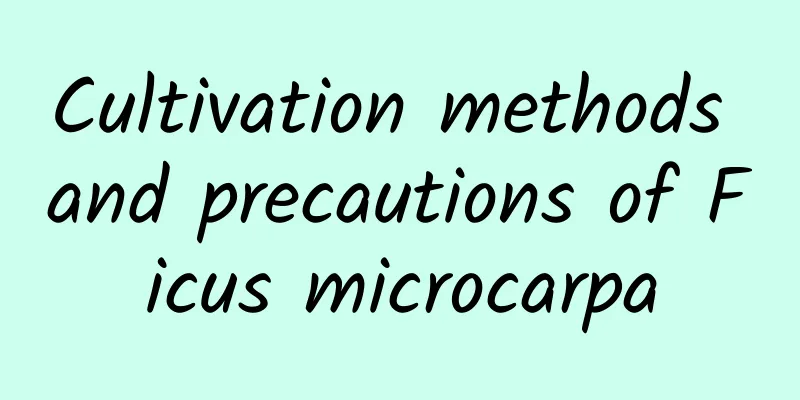How to grow pepper grass

1. Maintenance methods1. Temperature: The cold resistance of wrinkled peperomia is very poor. Generally, a warm environment is more suitable for its growth. The temperature needs to be kept between 25 and 28 degrees. It cannot be cultivated directly outdoors in winter. The ambient temperature needs to be kept above 12 degrees to prevent the plant from being frostbitten. 2. Watering: Peperomia prefers a humid growing environment, but it cannot tolerate stagnant water, which will cause root rot. Therefore, just try to keep the soil moist, and water it thoroughly each time. In summer, you can also spray it to replenish water. 3. Light: Peperomia japonica is a semi-shade plant. It needs to be placed in a semi-shade in the summer. It cannot be directly exposed to strong light. Strong light will cause the branches and leaves of the plant to turn yellow and grow poorly. If there is not enough light, the branches and leaves of the plant will also grow too long. It needs full sunlight in spring and winter. 4. Fertilization: Fertilizer is needed once a month during the growth period to promote branching. Nitrogen fertilizer is mainly used for fertilization. However, be careful not to apply the fertilizer to the branches and leaves of the plant. You can also rinse the branches and leaves with water after fertilizing to ensure that its normal absorption is not affected. 2. Breeding techniques1. Reproduction: Mainly by cuttings and division. These two methods are mainly carried out in spring. For cuttings, choose strong branches grown in the current year. After cuttings, you need to control watering and temperature so that they can grow normally. For division, separate some stems around the mother plant and then replant them in the pot. 2. Pruning: During the growth period, there may be problems of excessive growth and poor growth, and there may also be some yellowing branches and leaves. These branches and leaves can be directly pruned off to control the plant shape and facilitate its normal growth. 3. Problem diagnosis and treatment1. Disease: Root rot will occur. This disease will appear in the summer and is mainly caused by insufficient ventilation, so it can be controlled by spraying wettable powder. 2. Pests: Aphids may appear. You can cut off some of the larvae branches and leaves when pruning, or you can spray pesticides. IV. Other issues1. Toxicity: It is non-toxic and has good medicinal value. 2. Can it be kept at home? Of course, it can purify the air at home. |
<<: Cultivation method of algae bell jade
Recommend
When does the pennywort bloom?
1. When to grow flowers This flower can be plante...
How to accelerate the flowering of chrysanthemum
method New Year In mid-August, expose the chrysan...
Introduction to Succulent Planting for Beginners
1. Selection of potting soil For beginners, choos...
What should I do if there are too many aloe vera plants growing out of the pot? Will it affect the growth of aloe vera?
1. What to do if there are too many pots? 1. Time...
Causes and treatments for yellowing leaves of dianthus
1. Insufficient light 1. Reason: Indoor cultivati...
Can tap water be used to water flowers?
Can tap water be used to water flowers? It is bes...
How to water potted Dendrobium
Key points for watering potted Dendrobium Dendrob...
How often should I water my gemstone?
How often should I water my gemstone? The amount ...
Celery Planting Time and Method
Root celery is one of the special vegetable varie...
Cultivation methods and precautions of creeping grass
Family farming methods soil Although creeping gra...
Is it profitable to grow flowers? Profits and benefits of growing flowers
Is growing flowers profitable? There are many var...
The difference between Areca palm and Hawaiian coconut
1. Different varieties Although the Areca palm lo...
How to care for iron tree in winter
Is the iron tree afraid of freezing? The suitable...
How to grow cucumbers to achieve high yield?
Cucumber, as a common vegetable , occupies an imp...
Characteristics of peach blossom
1. Appearance characteristics There are many vari...









